Econmic
Benincasa hispida
Wax gourd, also known as ash gourd, white pumpkin, and white gourd, originated from the Indo-China region5 and is widely cultivated in India, Japan, China, and many other tropical areas, with increasing popularity in the Caribbean and the United States. Wild wax gourd has a small fruit, whereas most wax gourd cultivars bear a giant fruit (up to 80cm in length and weight of over 20kg). Its fruit contains important nutrients, such as vitamins and flavonoids6, and metabolites that can be used in treating various disorders.
It contains many important nutrients, and some metabolites can be used in treating fever and various disorders. Commonly, it is used as an important vegetable and its young leaves, flower buds, immature and mature fruit is cooked and eaten. For its medicinal properties, it has been recognized in the traditional Chinese medicine and Ayurvedic medicine system over thousands of years, and now there are an increasing number of studies reported its medicinal values. Moreover, the wax gourd is widely used in the food industry for making candied fruit, moon cakes and many kinds of pies as a base filling material.
A chromosome-level reference genome of the wax gourd (Benincasa hispida)
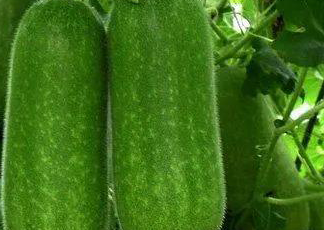
Cucumis sativus
Cucumber (Cucumis sativus) is an important vegetable crop and a model plant for sex determination and vascular biology. It's an important species for the global food market, represents a model organism for investigations of organellar genetics, flower sex determination, mechanisms of somatic embryogenesis epigenetics of various stresses in tissue culture and various aspects of chloroplast gene regulation.
Article Title: The Genome Sequence of the North-European Cucumber (Cucumis sativus L.) Unravels Evolutionary Adaptation Mechanisms in PlantsA chromosome-scale genome assembly of cucumber (Cucumis sativus L.)
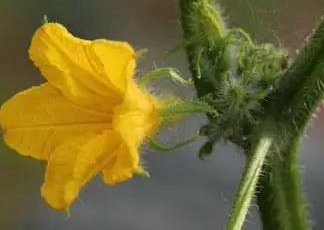
Cucurbita maxima
These Cucurbita maxima crops are used as a staple food in many developing countries, and are consumed all over the world, mainly for their mature fruits and seeds, which are a rich source of nutritional compounds. In addition to their culinary uses, the fruits are also used as ornaments and carved into decorative lanterns around Halloween. Nowadays, C. maxima is cultivated worldwide. It's also used as rootstocks for other cucurbit crops, including watermelon, cucumber and melon, to enhance tolerance to soilborne diseases and abiotic stresses.
Article Title: Karyotype stability and unbiased fractionation in the paleo-allotetraploid Cucurbita genomes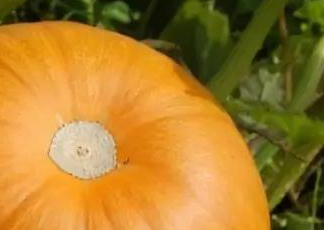
Cucurbita moschata
It is also used as rootstock for other cucurbit crops, including watermelon, cucumber and melon, to enhance tolerance to soilborne diseases and abiotic stresses.
Article Title: Karyotype stability and unbiased fractionation in the paleo-allotetraploid Cucurbita genomes
Cucurbita pepo
Cucurbita pepo is an economically important crop. Its production reached 25 million tons in 2014, with nearly two million cultivated hectares. Cultivated varieties display a rich diversity of vine, flowering and fruit traits, and among them, cultivars of the zucchini group rank among the highest-valued vegetables worldwide.
Article Title: De novo assembly of the zucchini genome reveals a whole-genome duplication associated with the origin of the Cucurbita genus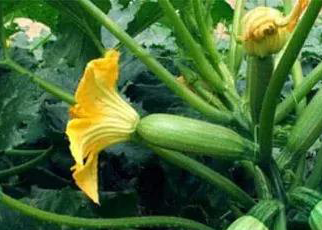
Lagenaria siceraria
As one of the most ancient crops cultivated by human, bottle gourd is widely grown in the world today, particularly in the East Asian countries. There are many beneficial uses of bottle gourd, due largely to its fruits that can be used for food, medicine, containers, musical instruments or decorative artefacts. With the nutritional benefits to human health, its immature young fruits are a delightful culinary vegetable in many tropical and temperate regions. In recent years, bottle gourd has also been used as an important rootstock for grafting to other cucurbit crops to improve their disease resistance and cold tolerance. Bottle gourd exhibits a tremendous diversity in fruit shape, varying from almost perfectly round to extremely elongated, with a range of intermediate types such as pyriform, elongated curvilinear, hulu (double-gourd), oblate, dipper and tubby.
Article Title: The bottle gourd genome provides insights into Cucurbitaceae evolution and facilitates mapping of a Papaya ring-spot virus resistance locusLong-read genome assembly and genetic architecture of fruit shape in the bottle gourd
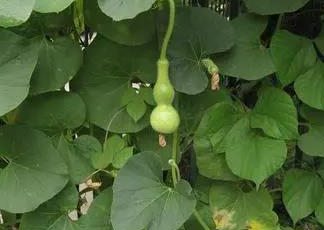
Citrullus lanatus
Watermelon (C. lanatus) is an important cucurbit crop, accounting for 7% of the worldwide area devoted to vegetable production. The annual world production of watermelon is about 90 million tons, making it among the top five most consumed fresh fruits.The large edible watermelon fruits contribute to the diets of consumers throughout the world. Although comprised mainly of water (often over 90%), watermelon also contains important nutritional compounds, including sugars, lycopene and cardiovascular health–promoting amino acids, such as citrulline, arginine and glutathione4,5,6. Watermelon and cucurbit species in general have unique developmental mechanisms that facilitate the rapid growth and formation of giant pepo fruits7. Fruits of modern watermelon varieties are diverse in shape, size, color, texture, flavor and nutrient composition.
Article Title: The draft genome of watermelon (Citrullus lanatus) and resequencing of 20 diverse accessions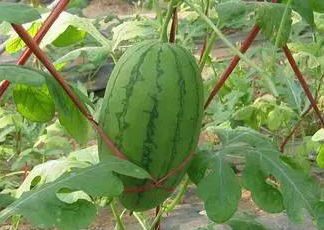
Cucumis melo
Melon is an important fruit crop, with 26 million tons of melons produced worldwide in 2009. It is particularly important in Mediterranean and East Asian countries, where hybrid varieties have a significant and growing economic value. It is grown largely in Northeast Asian countries, including Korea, China, and Japan. It is cultivated primarily for its fruit, which generally has a sweet aromatic flavor and contains soluble sugars, organic acids, minerals, and vitamins. Traits of the fruit, such as shape, skin color, flesh color, and sugar content, are highly variable. With its rich variability in observable phenotypic characters, melon was the inspiration for theories which were the precursors of modern genetics.
Article Title: The genome of melon (Cucumis melo L.)
Luffa cylindrica
The sponge gourd fruit is an edible vegetable and must be harvested at a young stage of development. In addition, many kinds of medicinal components, such as alkaloids, flavonoids, sterols, glycosides and glycoproteins, are used for anti-inflammation, antifungal, antibacterial, antimyocardial ischaemic, sedative and analgesic purposes. The seed of sponge gourd is reported to be rich in luffin, which has been shown to be effective against human immunodeficiency virus. Mature fruits contain a tough and fibrous network of cellulose that can be used as bathing or cleaning sponges as well as biodegradable filters. Sponge gourd has also been widely used in medicine. Alcalase or tryptic protein hydrolysates in its seeds are an effective treatment for diabetes and hypertension. Additionally, the leaves, seeds, and fruits of sponge gourd have been used for the treatment of various diseases, including inflammatory diseases, diarrhea, and viral infections, and the triterpenoids isolated from sponge gourd (sapogenins 1 and 2) exhibit immunomodulatory activity.
Article Title: Long-read sequencing and de novo assembly of the Luffa cylindrica (L.) Roem. genomeA high-quality sponge gourd (Luffa cylindrica) genome

Gynostemma pentaphyllum
Gynostemma pentaphyllum, a traditional Chinese medicinal herb of the Cucurbitaceae family, is widely distributed in Southeast Asia, including China, Korea, and Japan, with a wide elevation range from 300m to 3200m. G. pentaphyllum is generally used due to its anti-oxidation, anti-cancer, and anti-inflammatory properties, as well as functioning in reducing blood fat and improving immunity because it contains many beneficial substances, such as saponins, flavonoids, andamino acids. The plant tastes sweet and aromatic, and it can be taken either as tea or in alcohol. Therefore, in recent years, G. pentaphyllum has attracted extensive attention from scientists in order to develop its great medicinal value and commercial potential.
Article Title: Chromosome-level genome assembly of Gynostemma pentaphyllum provides insights into gypenoside biosynthesisDiploid chromosome-level reference genome and population genomic analyses provide insights into Gypenoside biosynthesis and demographic evolution of Gynostemma pentaphyllum (Cucurbitaceae)

Herpetospermum pedunculosum
Herpetospermum pedunculosum is an annual herbaceous plant in the family Cucurbitaceae that is mainly distributed in the high-altitude (2,300–3,500 m asl) areas of Southwest China, Nepal, and Northeast India. The dried ripe seeds of H. pedunculosum are utilized as a traditional Tibetan medicine to treat liver diseases, cholic disorders, and dyspepsia.
Article Title: Chromosome-Level Genome Assembly of Herpetospermum pedunculosum (Cucurbitaceae)
Momordica charantia
Bitter gourd is characterized by its warty-skinned fruit and is widely cultivated in tropical and subtropical regions of the world. Bitter gourd fruits are rich in vitamin C, minerals, and carotenes. Bitter gourd fruits contain substances with the antidiabetic effect such as charatin, vicine, and polypeptide-p, which may improve insulin sensitivity and decrease blood glucose level.
Additionally, leaf decoction of bitter gourd is used in traditional medicine for the treatment of stomach pain, anemia, malaria, coughs, and fever. Recently, several studies have shown its antidiabetic effect in vitro and in vivo.

Siraitia grosvenorii
The chayote fruit is a gourd that is consumed as a vegetable, It is commonly cultivated in tropical and subtropical areas, such as Brazil, India, Costa Rica, China, and Mexico, and is a significant commercial crop worldwide. Chayote contains abundant bioactive compounds, such as phenolics, flavonoids, carotenoids, and bioactive polysaccharides in the fruit, leaves, tubers, and stems, and has potential for the treatment of hypertension, diabetes, and inflammation, as well as other pharmacological applications. In addition to being used as a natural sweetener, S. grosvenorii has been used in China as a folk remedy for the treatment of lung congestion, sore throat and constipation for hundreds of years.
Article Title: Combined genomic, transcriptomic, and metabolomic analyses provide insights into chayote (Sechium edule) evolution and fruit developmentImproved de novo genome assembly and analysis of the Chinese cucurbit Siraitia grosvenorii, also known as monk fruit or luo-han-guo

Trichosanthes anguina
Snake gourd originated in India or the Indo-Malayan region in tropical Asia and is widely distributed in Asian countries. Its green, tender stems, leaves, and fruits are consumed as edible vegetables, which have high nutritional value, because they are rich in vitamins, essential minerals, dietary fiber, and other nutrients, and are a wholesome, healthy addition to diets. The fruits of snake gourd are frequently consumed when immature. As the fruits mature, the rind and flesh turn red, and the red flesh is used as a tomato substitute. Snake gourd fruits can grow to 1.5m in length, are serpentine in shape (hence the name snake gourd), and are used for ornamental purposes when they are mature. Their functional constituents include flavonoids, β-carotenoids, lycopene, and phenolic acids, which have beneficial pharmacological and therapeutic effects for humans.
Article Title: The genome and transcriptome analysis of snake gourd provide insights into its evolution and fruit development and ripening
Begonia loranthoides
Begonia L. (Begoniaceae, Cucurbitales) is well known for a huge diversity of leaf shapes, patterns and textures. The genus is pantropical and comprises more than 2000 currently accepted species of herbs. Begonia has high species diversity in the New World and Asia.
Begonia species exhibit a continuum of light adaptation ability ranging from deep shade to full sun, affording us the opportunity to unravel mechanisms of adaptation to cope with variable levels of light. Understanding how shade-adapted species optimize photosynthesis and physical defense, while suppressing the shade-avoidance syndrome (SAS; strong elongation growth away from shaded microconditions and accelerated flowering), will be valuable for crop improvement.
